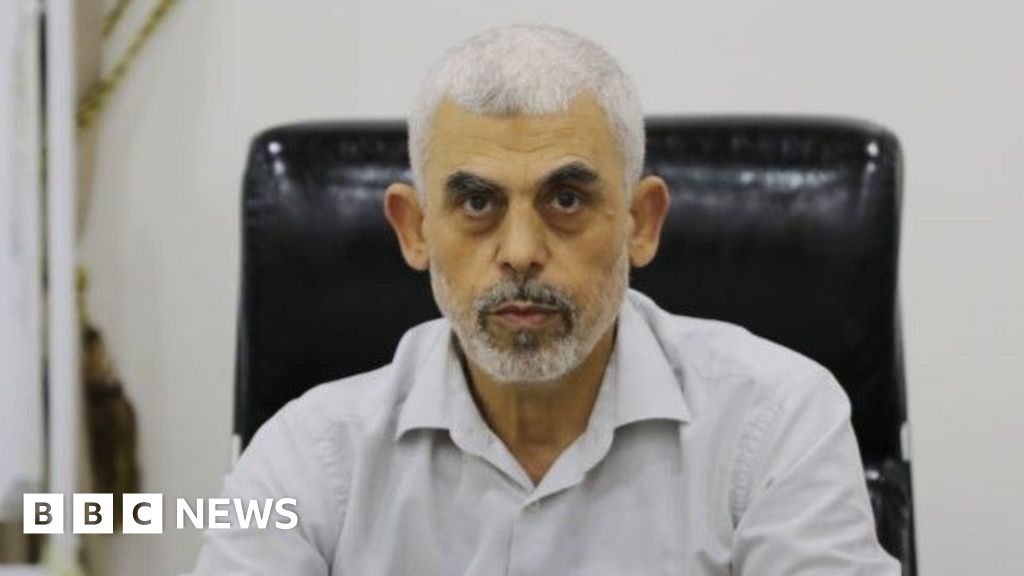Headline: Gaza Home of Slain Hamas Leader Yahya Sinwar Shockingly Identified
The recent death of Yahya Sinwar, a key figure behind the October 7 attacks on Israel, has drawn both international attention and personal heartbreak. Ashraf Abo Taha, a displaced Palestinian from Gaza, discovered that the building in which Sinwar was killed was his home of 15 years in Rafah. This revelation strikes a powerful chord amid the ongoing conflict, highlighting the intersecting fates of individuals caught in a shadow of war and violence.
The Unfolding Story: Yahya Sinwar’s Death and Its Personal Toll
On Wednesday, Israeli forces killed Yahya Sinwar in a targeted operation. Footage released by the Israeli military depicted Sinwar in a partially destroyed structure on Ibn Sena Street in Rafah, southern Gaza, before the attack. Brightly lit images contrasted starkly against the backdrop of a decimated neighborhood, capturing a moment that would resonate far beyond the immediate violence.
Ashraf Abo Taha, who had to flee his home in May due to escalating military operations, watched in disbelief as his daughter showed him social media footage of their residence, now associated with a high-profile Hamas leader. Initially reluctant to accept the shocking news, Abo Taha’s doubt turned to confirmation upon receiving word from his brother.
"I was like ‘yes, this is my house,’ and I saw the pictures, and I was shocked," Abo Taha shared with BBC Arabic’s Gaza Lifeline. "Never ever did me and my brothers and sons have anything to do with this."
A Story of Displacement: The Broader Impact of Violence
The situation in Gaza has reached a critical point, as the Israeli assault on Rafah commenced in May and led to a massive exodus of over one million Palestinians according to the UN. Many were displaced multiple times, seeking refuge in areas previously deemed safe.
Ashraf Abo Taha described how he had built his home in Rafah himself, a labor of love that cost around 200,000 shekels (£41,400). "What happened has saddened me a lot; the house that I built and all my payments are gone," he lamented. The painful memories of his home, complete with orange sofas and a cherished orange casserole dish, lingered vividly in his mind.
"It’s profoundly heartbreaking," Abo Taha remarked. "Some of these were brought by my mum, and they are very precious to me."
The Role of Media Verification: BBC’s Analysis
The BBC engaged in thorough verification of the visuals surrounding Sinwar’s death. Their analysis confirmed that structures in question matched Abo Taha’s home. Images comparing window archways, door decorations, and even identifiable furniture underscored the agonizing reality for those displaced.
While the BBC confirmed details through image analysis, it is important to note that they cannot independently verify ownership of the property. This aspect raises numerous questions about the collateral damage of targeted campaigns in populated areas, calling for a broader examination of the implications on residential life during military operations.
Human Aftermath: Clearing the Ruins of Conflict
With buildings reduced to rubble and families shattered, the human element of this conflict comes into sharper focus. The destruction goes beyond mere property loss; it affects identity, history, and the community fabric. As Ashraf Abo Taha stated, "Only God can compensate us," his words echoing the sentiment of many Palestinians facing an uncertain future.
In many neighborhoods, homes in Rafah have become symbols of loss and grief. The stories of the displaced serve as powerful reminders of the larger humanitarian issue facing the region, calling for international attention and response.
What Lies Ahead for Gaza and Its People?
While little can be done to restore what was lost for people like Abo Taha, discussions surrounding rebuilding and community support are essential. NGOs and humanitarian organizations often play a crucial role in providing relief, shelter, and reconstruction assistance to those who find themselves homeless due to military conflicts.
As global conversations about the Israel-Palestine conflict continue to evolve, the case of Yahya Sinwar’s death in a civilian home raises important ethical questions about targeting tactics. How can military operations avoid civilian casualties while pursuing tactical objectives? What responsibility do combatants have for the homes and lives they disrupt?
In responding to these complex scenarios, the community is called upon to engage in dialogues that prioritize human safety, dignity, and the potential for peace. Sharing personal narratives like that of Ashraf Abo Taha may also illuminate the stark realities on the ground, fostering empathy and understanding within the international community.
Let’s keep this conversation going—your thoughts and perspectives matter. Share your comments below and help us reflect on the human stories emerging from such devastating events.
For more insights on the ongoing situation in Gaza, explore our articles on humanitarian impact [here] and the dynamics of regional conflict [here].
Image Source:
Getty ImagesYahya Sinwar, pictured in June 2021, was killed by Israeli forces on WednesdayThis examination of Yahya Sinwar’s demise serves as a harrowing case study, exemplifying the profound and often painful intersection of political conflict and personal history.

